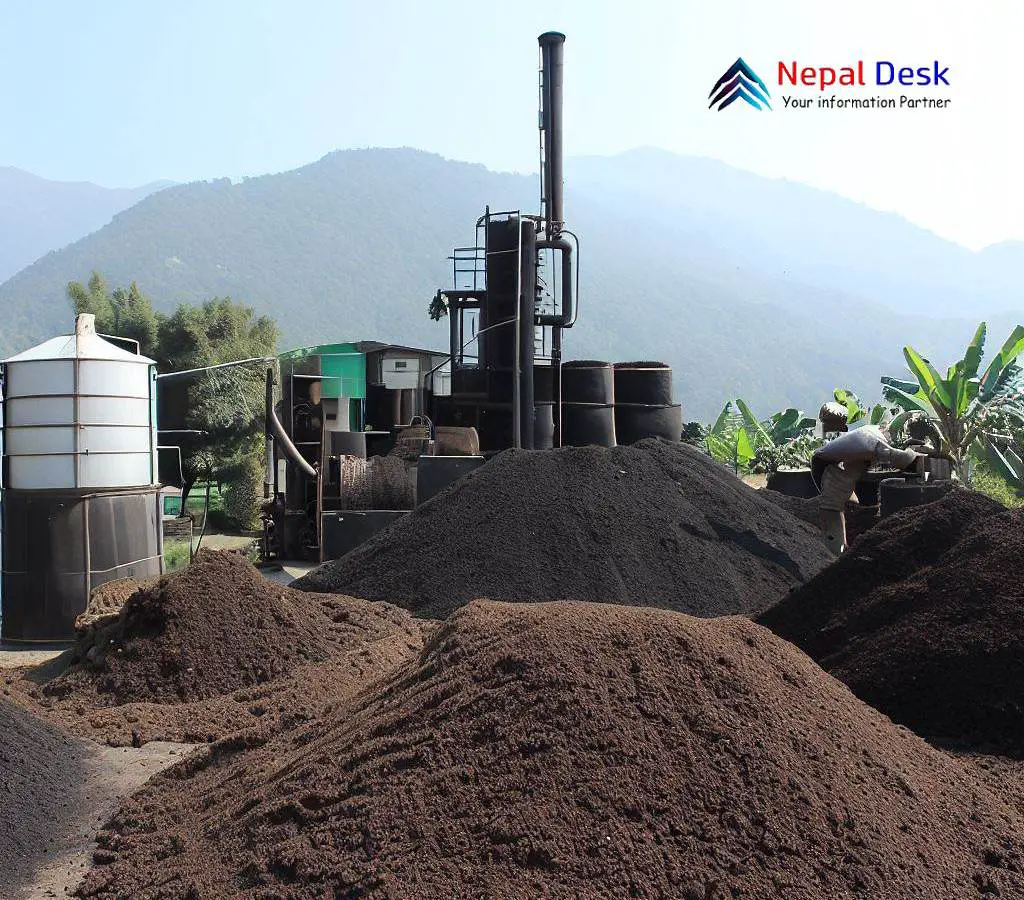Organic Fertilizer Industry in Nepal: Production and Opportunities
Published Date

Published Date
Delve into Nepal's organic fertilizer sector, exploring production capacities, granular and dust forms, and market trends. Learn how to make sustainable choices.
⏱ 5 min read
The fertilizer sector in Nepal is a burgeoning industry with a diverse range of products and significant production capacities. This comprehensive report aims to provide an in-depth analysis of the industry, focusing on the types of fertilizers, production capacities, and geographical distribution. It also aims to highlight the total production of organic fertilizers by formally registered companies in Nepal discussing the differences and distributions of Granular and Dust forms in the country.
Key Insights on Organic Fertilizers Industries in Nepal
Diversity in Fertilizer Types: The market offers both Granular and Dust forms of fertilizers.
Total Production: The total production capacity is substantial, reaching up to 227,880 Metric Tons.
Geographical Spread: Companies are strategically located across various regions in Nepal.
Production Analysis of Organic Fertilizer
Granular Fertilizers
Company: 4
Product: 'Safal Kisaan' by Janakpur Fertilizer, 'Kisaan Organic Fertilizer' by Annapurna Kishan, and 'Himal Organic Fertilizer' by Himal Feed.
Total Production Capacity: 160,600 Metric Tons
Dust Fertilizers
Producing Company: 5
Product: 'Rikishi Compost' by Rikishi Compost Pvt. Ltd., 'Annapurna Organic Fertilizer' by Annapurna Fertilizer, and 'Manakamana Agrimal Organic Compost' by Manakamana Agritech.
Total Production Capacity: 67,280 Metric Tons
Production Capacities
Highest Capacity: Manakamana Agritech Pvt. Ltd. with 100,000 Metric Tons.
Lowest Capacity: Janakpur Fertilizer Industries Pvt. Ltd. with 3,600 Metric Tons.
Geographical Distribution
Eastern Nepal: Morang hosts two companies.
Central Nepal: Bhaktapur, Lalitpur, and Viratnagar collectively host four companies.
Western Nepal: Gandaki Province and Chitwan host two companies.
Nepal's fertilizer industry is not only diverse but also has a significant production capacity. With a total production capacity of 227,880 Metric Tons, the industry is well-poised for growth and expansion. The granular form of fertilizers seems to dominate the market in terms of production capacity, but the dust form is not far behind. Companies are also strategically located across Nepal, indicating a well-thought-out market penetration strategy.
Market Patterns and Consumer Tendencies
Consumer Interest: Recent studies reveal an increasing liking for organic fertilizers, coinciding with worldwide tendencies toward eco-friendly farming.
Seasonal Necessity: Fertilizer demand spikes during planting periods, so companies must be ready to manage this increase.
Price Variability: The sector has experienced some fluctuations in pricing, often due to interruptions in the supply chain or alterations in policies.
Regulations and Guidelines
Government Strategies: Current governmental plans are designed to stimulate local production and lessen reliance on imports.
Quality Measures: All firms comply with national quality requirements, but there is a push for global certifications to enhance export opportunities.
Environmental Effects
Eco-friendliness: Companies are putting more emphasis on sustainable methods to reduce their environmental footprint.
Waste Handling: Appropriate disposal techniques for waste materials are being enforced to meet environmental regulations.
Technological Progress
Automation Advancements: Some businesses are embracing automated solutions for increased efficiency and lower labor expenses.
Innovation and Development: Investing in research and development is essential for creating new, more potent fertilizer varieties.
SWOT Breakdown
Strengths: Substantial production capabilities, a wide array of products.
Weaknesses: Fluctuating demand, and price instability.
Opportunities: Expanding organic sector, potential export growth.
Threats: Regulatory adjustments, ecological concerns.
Future Outlook
Growth Projections: Given that the organic fertilizer industry in India is projected to grow at a CAGR of 8.71%, and considering Nepal's burgeoning market and increasing consumer awareness, the industry in Nepal is estimated to grow at a CAGR of approximately 9% to 11% over the coming five years.
Please note that this is a rough estimate based on general trends in similar emerging markets and should not be used for investment or other financial decisions.
Investment Prospects: The prospect of industry expansion creates appealing investment options.
Dust Fertilizers vs Granular Fertilizer: A comparison
The suitability of organic fertilizer types—Dust or Granular—depends on various factors such as soil type, crop needs, and climatic conditions, rather than the country itself. Here are some considerations that might help determine which is better for specific situations in Nepal:
Dust Fertilizers
Better Soil Integration: Dust fertilizers are easier to integrate into the soil.
Quick Absorption: Being finer, they can be absorbed more quickly by plants.
Cost-Effective: Generally cheaper to produce and therefore more affordable.
Erosion Risk: Finer particles can be washed away more easily, posing a risk of nutrient runoff.
Granular Fertilizers
Controlled Release: Nutrients are released more slowly, providing a steady supply.
Ease of Application: Easier to apply without specialized equipment.
Reduced Erosion Risk: Less susceptible to being washed away by rain.
Storage and Transport: Generally easier to store and transport.
Contextual Factors
Soil Type: Nepali soils vary from sandy to loamy to clayey. Dust fertilizers might be more suitable for sandy soils which drain quickly, while granular types might be better for clayey soils.
Crops: Different crops have different nutrient uptake rates and may benefit more from one type of fertilizer than the other.
Climate: In regions with heavy rainfall, granular fertilizers may be more effective as they are less likely to be washed away.
Recommendations
Capacity Enhancement: Companies with lower capacities should consider technological advancements or collaborations to increase production.
Market Expansion: Companies should explore untapped markets in other regions of Nepal, given the diverse geographical distribution.
Conclusion
Nepal's fertilizer sector is experiencing positive growth, with numerous opportunities for expansion and investment. With companies geographically well-spread and possessing significant production capacities, the market will likely be led by those who quickly adapt to changing consumer preferences towards sustainable choices.
